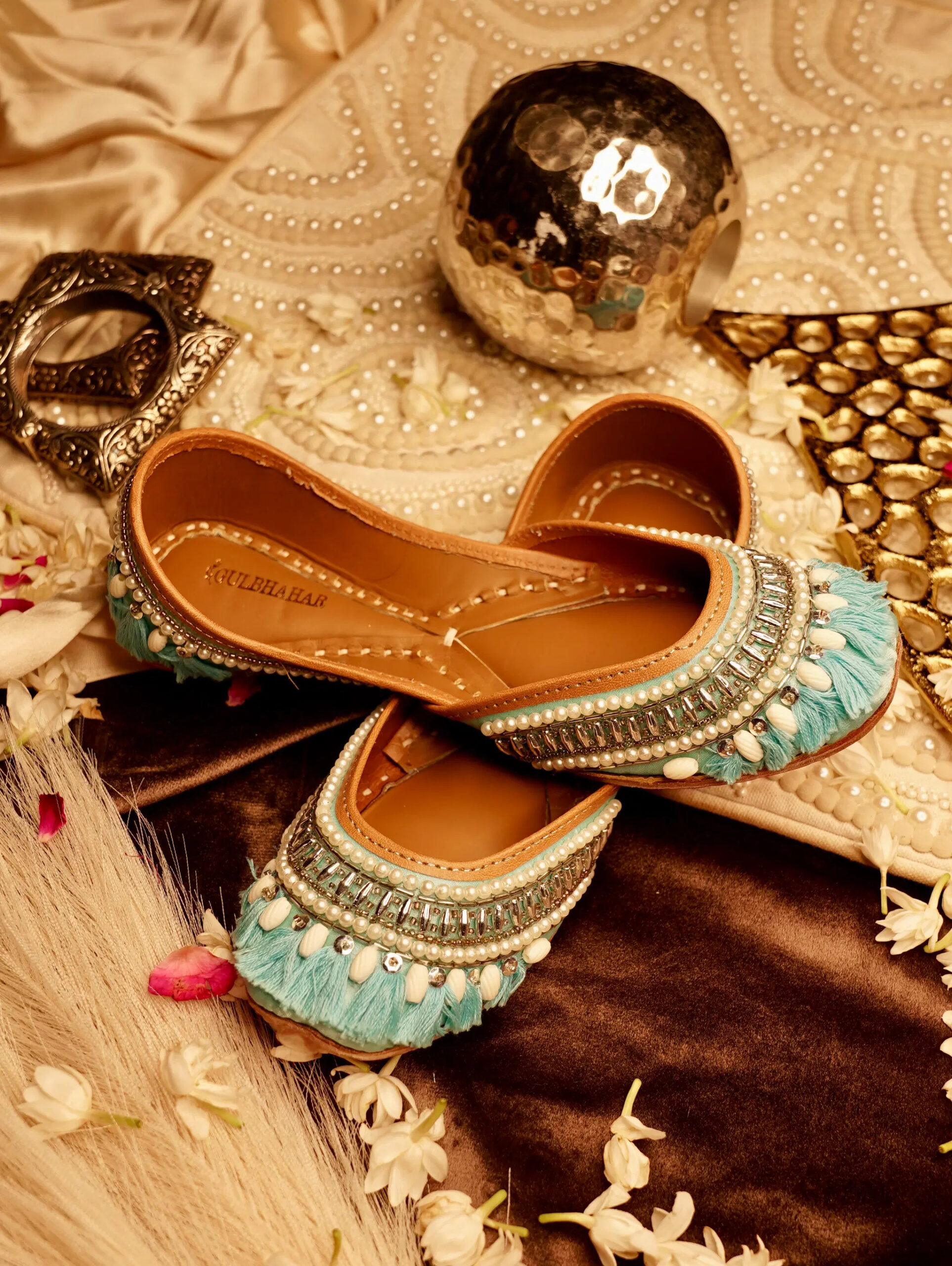Amid a world growingly dominated by machine precision and mass production, the production of genuine juttis is still a very human activity. Each pair is the product of a process lasting days, occasionally weeks, involving several competent artisans who bend their know-how into each cut, stitch, and ornament. Handcrafted juttis are centuries of cultural heritage, artistic sophistication, and the priceless touch of human imagination.
The Master’s Journey Begins
The journey to creating quality juttis begins with the selection of the leather, making this task an art that separates the skilled craftsman from the mediocre manufacturer. An experienced craftsman will examine each hide with a trained eye, feeling the texture with his fingers, testing pliancy and understanding the hidden graining in the leather that will affect the character of the finished product.
Leather, used for handmade juttis, must have characteristics It needs to be supple as it needs to be comfortable, tough as it needs to be durable, and just the right thickness to let the jutti hold its traditional shape. We tend to look for our raw materials in specific areas like places with good animal husbandry, knowing that good shoes start with good raw materials.
Creating patterns for juttis is a measured response of precision mathematics and artistic instinct. A skilled artisan cannot follow a pattern, they need decades of experience to learn those patterns and really understand how the leather is going to react when cut, extended or shaped. Every piece of the pattern has to consider the natural stretch of the leather and how the final piece looks as a finished product.
Handcrafted juttis can only lean on patterns that have been passed down generation to generation, with lightness of change from master to apprentice. This passing down allows unchanged shape and distances but with a few innovational changes for comfort or anchorage.
The Stitching Symphony
Hand stitching juttis calls for considerable ability and the ability to remain patient. Unlike machine stitching, hand stitching creates non-uniform and free flowing lines that gives handcrafted juttis that unique comfort and ease. Each stitch is placed deliberately, and utilizing tension deliberately to create strength and not stiffness.
The old-school cobbler’s stitch used in the construction of juttis creates seams that actually strengthen with time. As the leather is worn and softens, these handstitched seams naturally form to provide the level of comfort that defines genuine juttis from the mass made plastic-based shoes.
Embellishment: The Heart of Design
The process of decorating takes the utility footwear and turns it into a piece of art. Be it is simple sewing, placing mirrors, or creating rows of beads the artisan considers every handmade jutti as a single piece of art. There are no pairs of juttis that are the same, even slight differences in thread tension, color placement, or alignment of pattern bring a personality that cannot be replicated by machine.
The Finishing Touch
The assembly involves touching the requisite multiple components together in a precise manner. The upper must touch the sole with the same level of precision both in comfort and shape; the jutti should keep its distinctive pointed shape.
Quality Control
Handcrafted juttis are carefully checked for quality by qualified artisans multiple times before any combinations are approved and assembled.
The skill of the jutti maker today is the living heritage of jutti making; it is an education of knowledge and skill that may not be easily passed on in an age of machines. The tradition of handcrafted juttis has informed generations of people as they feel the distinctive comfortable, beautiful, and culturally rich presence only accomplished by human hands.
The work of hand-making juttis affirms the value of human resilience towards creating beauty from raw materials through knowledge, skill, patience, and creative imagination.






